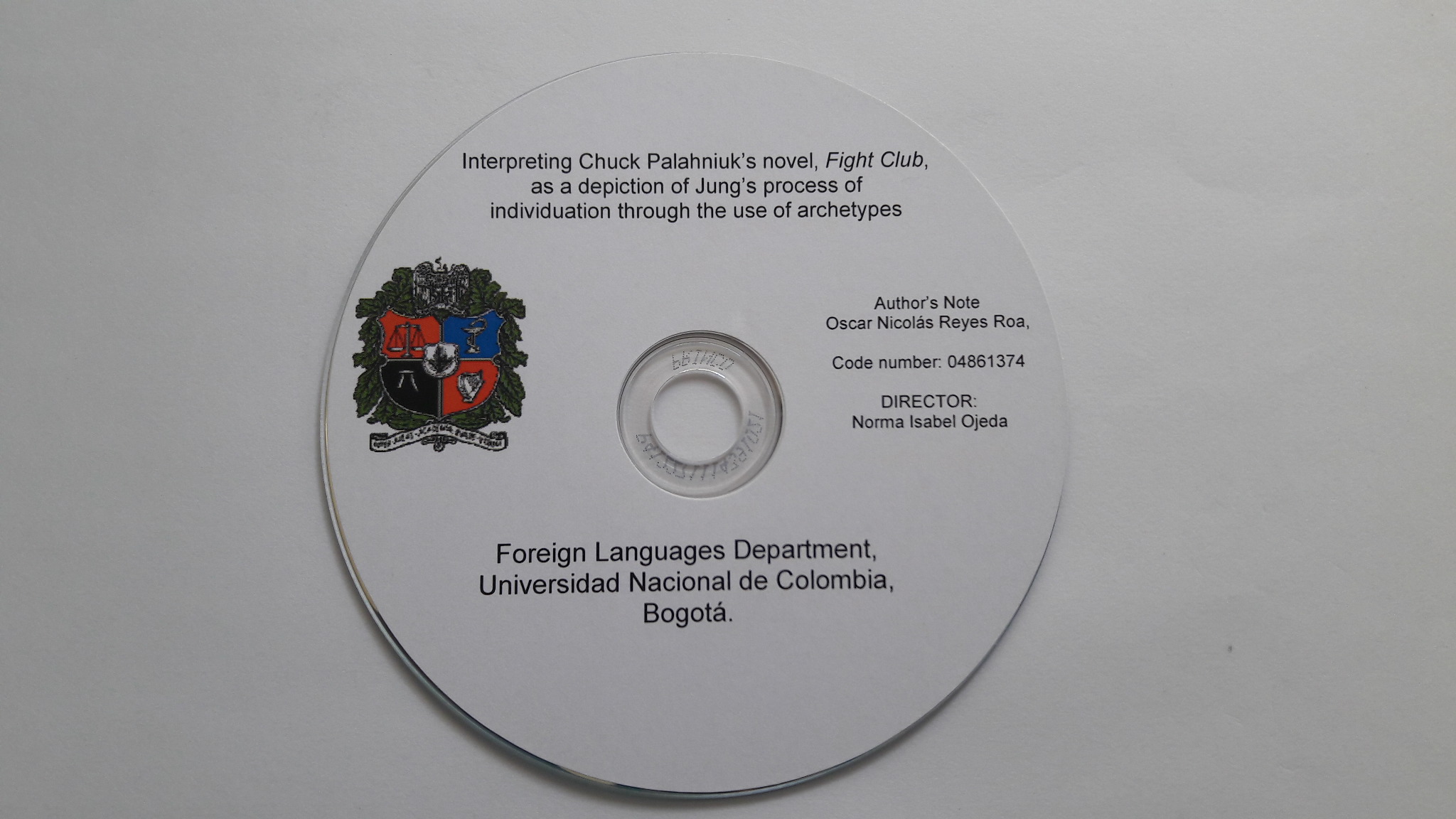
Abstract
The present paper identifies and interprets Chuck Palahniuk’s novel, Fight Club from the perspective of Jung’s process of individuation as the driving force for the unfolding and evolution of the narrator and the shadow’s characters. This relationship is evidenced in the verbal material and the events that take place in the novel where key elements of Jungian psychoanalysis such as the psyche, the unconscious, the collective unconscious, and the archetypes play an important role, as well as recurring themes like sacrifice, rebirth and religion. These are also analyzed and taken into account in the different stages that take place during the process of individuation.
Keywords
shadow, anima, haiku, sacrifice, rebirth, religion, project mayhem, collective unconscious, Self, divisio, separatio, solutio, psyche, transformation
References
Farthing, G. W. (1991). The Psychology of Consciousness (3rd ed.). Upper Saddle River, NJ: Prentiss Hall College Division.
Hock Soon, A. (2005). Muscular Existentialism in Chuck Palahniuk’s Fight Club. Stirrings Still, 2(2), 116 – 138.
Jung, C. G., & Jaffé, A. (1963). Memories, Dreams and Reflections. (R. Winston & C. Winston, Trans.). Pantheon Books.
Jung, C. G. (1916). The Transcendent Function. In The Structure and Dynamics of the Psyche (Vol. 8). United States Of America: Princeton University Press.
(1918). The Role of the Unconscious. In Civilization in Transition (Vol. 10). United States Of America: Princeton University Press.
(1927). Mind and Earth. In Civilization in Transition (Vol. 10). United States Of America: Princeton University Press.
(1933). The meaning of psychology for modern man. In Civilization in Transition (Vol. 10). United States Of America: Princeton University Press.
(1946). The Fight with the Shadow. In Civilization in Transition (Vol. 10). United States Of America: Princeton University Press.
(1928). The Relations between the Ego and the Unconscious. In Two Essays on Analytical Psychology (2nd Edition, Vol. 7). United States Of America: Princeton University Press.
(1931). The Aims of Psychotherapy. In The Practice of Psychotherapy (Vol. 16). United States Of America: Princeton University Press.
(1934a). Archetypes of the Collective Unconscious. In The Archetypes and the Collective Unconscious (Vol. 9.1). United States Of America: Princeton University Press.
(1934b). A Study in the Process of Individuation. In The Archetypes and the Collective Unconscious (Vol. 9.1). United States Of America: Princeton University Press.
(1936a). Concerning the Archetypes, with Special Reference to the Anima Concept. In The Archetypes and the Collective Unconscious (Vol. 9.1). United States Of America: Princeton University Press.
(1936b). The Concept of the Collective Unconscious. In The Archetypes and the Collective Unconscious (Vol. 9.1). United States Of America: Princeton University Press.
(1938). Psychological Aspects of the Mother Archetype. In The Archetypes and the Collective Unconscious (Vol. 9.1). United States Of America: Princeton University Press.
(1939). Conscious, Unconscious and Individuation. In The Archetypes and the Collective Unconscious (Vol. 9.1). United States Of America: Princeton University Press.
(1940). Concerning Rebirth. In The Archetypes and the Collective Unconscious (Vol. 9.1). United States Of America: Princeton University Press. (1950). Concerning Mandala Symbolism. In The Archetypes and the Collective Unconscious (Vol. 9.1). United States Of America: Princeton University Press.
(1954). On the Psychology of the Trickster Figure. In The Archetypes and the Collective Unconscious (Vol. 9.1). United States Of America: Princeton University Press.
(1951a). Gnostic Symbols of the Self. In AION: Researches into the Phenomenology of the Self (Vol. 9.2). United States Of America: Princeton University Press.
(1951b). The Ego. In AION: Researches into the Phenomenology of the Self (Vol. 9.2). United States Of America: Princeton University Press.
(1951c). The Self. In AION: Researches into the Phenomenology of the Self (Vol. 9.2). United States Of America: Princeton University Press.
(1951d). The Shadow. In AION: Researches into the Phenomenology of the Self (Vol. 9.2). United States Of America: Princeton University Press.
(1951e). The Structure and Dynamics of the Self. In AION: Researches into the Phenomenology of the Self (Vol. 9.2). United States Of America: Princeton University Press.
(1951f). The Syzygy: Anima and Animus. In AION: Researches into the Phenomenology of the Self (Vol. 9.2). United States Of America: Princeton University Press.
& Jaffé, A. (1963). Memories, Dreams and Reflections. (R. Winston & C. Winston, Trans.). Pantheon Books.
(1966a). Specific problems of psychotherapy: The therapeutic value of abreaction. In The Practice of Psychotherapy (Vol. 16). United States Of America: Princeton University Press.
(1966b). The Structure of the Unconscious. In Two Essays on Analytical Psychology (Vol. 7). United States Of America: Princeton University Press.
(1968). Individual dream symbolism in relation to the alchemy: a study of the unconscious processes at work in dreams. 3. The symbolism of the mandala. 1. Concerning the mandala. In Psychology and Alchemy (Vol. 12). United States Of
America: Princeton University Press.
(1969a). Answer to Job. In Psychology and Religion: West and East (Vol. 11). United States Of America: Princeton University Press.
(1969b). Psychotherapists or the clergy. In Psychology and Religion: West and East (Vol. 11). United States Of America: Princeton University Press.
(1971). Psychological Types. Definitions. In Psychological Types (Vol. 6). United States Of America: Princeton University Press.
(1973). Transformation Symbolism in the Mass. In Psychology and Religion: West and East (Vol. 11). United States Of America: Princeton University Press.
Bennet, R. (2005). “The Death of Sisyphus: Existentialist Literature and the Cultural Logic of Chuck Palahniuk’s Fight Club.†Stirrings Still, 2(2), 65 – 80.
Kavadlo, J. (2005). The Fiction of Self-Destruction: Chuck Palahniuk, Closet Moralist. Stirrings Still, 2(2), 3 – 24.
Kennet, P. (2005). Fight Club and the Dangers of Oedipal Obsession. Stirrings Still, 2(2), 48- 64.
Merriam Webster online. “Consciousness†(n.d.). Retrieved from http://www.merriamwebster.com/dictionary/consciousness
Kirschner, J. (2003). Inside Out: Haiku and Dreams. Evanston, Ill.: Deep North Press.
Mathews, P. (2005). Diagnosing Chuck Palahniuk’s Fight Club. Stirrings Still, 2(2), 81 – 104.
Palahniuk, C. (1996). Fight Club. New York, NY: Norton & Company, Inc.
Sartain, J. (2005). “Even the Mona Lisa is Falling Apartâ€: The Cultural Assimilation of Scientific Epistemologies in Palahniuk’s Fiction. Stirrings Still, 2(2), 25 – 47.
Shumate, C. (2011). Shadow Boxing with Fight Club. Personality Type in Depth, (8). Retrieved from http://typeindepth.com/2011/12/fight-club-functions/
